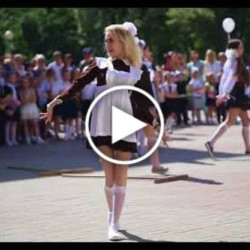How Do You Stop a Hurricane Made of Fire?
Walls of flames pushed by hurricane-force winds are devouring the Los Angeles basin, leveling whole neighborhoods and overwhelming firefighters. The water streaming from fire hydrants slows to a trickle. Ash rains down over the tens of thousands fleeing their homes, masked against the choking smoke. For Angelenos watching their city burn, there is no prior experience that can help them grasp the scale of what is happening. As a friend texted me from Hollywood, “This may be the biggest wildfire disaster in world history.”
The scale of the destruction is all the more dismaying given how assiduously California has prepared itself to combat wildfires. The state’s Department of Forestry and Fire Protection, better known as CAL FIRE, spends $4 billion a year on prevention and mitigation. Over the last decade that money has allowed it to assemble an army-like force of unprecedented sophistication and scale, with a staff of 12,000 and an aerial firefighting fleet larger than most countries’ air forces.
Yet in the face of some of the worst fire conditions in over a decade, it hasn’t been enough. Though some 9,000 firefighters were on hand to battle this week’s blazes, they were overwhelmed by the multiple wildfires that moved at hundreds of yards per minute. “We don’t have enough fire personnel in L.A. County between all the departments to handle this,” L.A. County fire chief Anthony Marrone told the L.A. Times on Wednesday.
The problem wasn’t only a shortage of manpower. Even the most formidable human efforts are useless when bone-dry undergrowth is whipped by the strongest winds the area has experienced in years, with gusts up to 100 mph. “When that wind is howling like that, nothing’s going to stop that fire,” says Wayne Coulson, CEO of the aerial firefighting company Coulson Aviation that’s battling the fires. “You just need to get out of the way.”
The winds slackened Wednesday night and on Thursday morning, helping firefighters gain the upper hand against some of the infernos. The city’s fire chief announced on Thursday that the Woodley fire in the San Fernando Valley had been brought under control and that firefighters had made gains against the Sunset fire threatening Hollywood. But other fires still burned out of control and further danger loomed. According to the National Weather Service, humidity remains dangerously low and gusty winds of up to 70 mph are expected between Thursday night and Friday evening. By Thursday morning, five major fires were still burning and tens of thousands of people were under evacuation orders. Warned the NWS: “Any new wildfires that develop will likely spread rapidly.”
If a California wildfire is a city-ravaging monster, it is one whose habits are well known. The menace follows an annual pattern. The risk is low in the winter months, when most of the year’s precipitation falls. Then as summer approaches Southern California dries out, temperatures climb, and the incidence of fires ticks upward. The danger really takes off with the arrival of the Santa Ana winds in the fall. These arise sporadically when high pressure over the inland desert pushes masses of dry air westward toward the sea. As the wind funnels through the coastal mountains it becomes warmer and dryer as it descends, creating what UCLA climate scientist Daniel Swain calls an “atmospheric blow-dryer.” Not only do the Santa Anas steal the last remnants of moisture from the landscape, they fan any existing flames like a bellows. They typically last for anywhere from a day to a week, though in rare cases they can stretch on for up to two weeks.
Historically, the danger of wildfire has waned with the arrival of winter rains, but in recent years that pattern has changed. “On average, California’s rainy season is occurring about a month later than it did historically,” Swain says. And that increases both the length and the potential intensity of the fire season. By this time of year L.A. normally should have received several inches of rain, but it’s only gotten a fifth of an inch since last July, making the period the second-driest in over a century of record-keeping.
The trend isn’t limited to Southern California. Climate change has increased the number and severity of wildfires around the world, with higher global temperatures leading to drier weather in some regions. The Russian arctic, which hadn’t historically been prone to wildfire, has started to experience it on an epic scale, while southeastern Australia is burning with new intensity. Europe, too, has seen a steady increase in wildfires. Last year’s wildfires in Canada choked the eastern U.S. in smoke and painted the daytime red.
In California, though, the consequences have been particularly brutal. Of the ten biggest wildfires in the state’s history, seven have occurred in the last five years. Five of those took place in 2020, including the record-breaking August Complex that destroyed over a million acres in Northern California. The following year the Dixie Fire burned nearly as much in the same region. The subsequent two years of relatively mild, wet weather provided a reprieve, but in a way that only pushed the danger down the road. “Because of the wet weather a lot of the fuel on the ground regenerated itself,” says Coulson. “Throw in dry air and some heat, and you’ve got all the makings for a very buoyant fire.”
In the face of this growing threat, California has spent years arming itself to fight back. It’s in a unique position to do so. The state not only has the resources to craft a new approach, but also access to the latest technologies — such as night vision, supercomputing, and broadband wireless data transmission — that enable new ways to outmaneuver a growing fire. CAL FIRE has taken these tools and applied them to an idea from modern military doctrine called the decision cycle. The idea is to gather as much data as quickly as possible, feed it into sophisticated models, generate a near-term forecast, formulate a response, and communicate decisions quickly to assets that can strike forcefully and with precision, as if targeting enemy soldiers.
The first part of the decision loop is made up of hundreds of sensors that dot the landscape, continuously monitoring temperature and humidity, while cameras keep watch from hilltops and satellites look down from above. All these sensors feed their data to the WIFIRE project (Workflows Integrating Collaborative Hazard Sciences) at the University of California San Diego, where a supercomputer integrates the information into a model of the region’s fire risk.
Once the system detects a blaze, an intelligence-gathering aircraft is dispatched to obtain a fine-grained understanding of the situation. The Fire Integrated Real-time Intelligence System (FIRIS) uses twin-engine Beechcraft King Air 200 turboprop aircraft for surveillance and control. In the front, next to the pilot, sits the “air attack,” a supervisor who directs the firefighting aircraft and coordinates with the leadership on the ground. In the back sits a mission operator who surveils the fire perimeter using a gimbal-mounted camera system in the nose of the plane. The data it collects is uploaded via satellite and fed forward to firefighters and back to WIFIRE, which within five minutes can update its model and tell firefighters where the fire is likely to be two, four, and six hours into the future.
The goal is to deploy aircraft during the so-called “initial attack” phase, while the fire is still growing, to stop it before it gets too big to control. “This is disruptive technology,” says Ilkay Altintas, chief data-science officer at UCSD’s San Diego Supercomputer Center. “This is the first time ever that fire modeling has been done using real-time data flow from aircraft during initial attack.”
Unfortunately, in extreme-weather events like the one currently gripping Southern California, conditions can be too severe for firefighting aircraft to take off. To get around this, aerial firefighting company Coulson Aviation has developed the ability to fight fires at night, when winds usually die down. But the winds currently buffeting the region have been so intense that they weren’t able to fly even then. “We were scheduled to fly all night, but the winds just didn’t subside,” company CEO Wayne Coulson told me Wednesday morning. “We’ll fly when the wind is under 50 knots. But it was blowing 50, 60 knots last night. It’s been violent.” (The crews were eventually able to get airborne later that day.)
If the modern approach to handling wildfires is to fight them like wars, they will be the kind of wars that never end. Every rain brings more growth that will someday become fuel; every drought makes that fuel dryer and more prone to combust. Every place that burns will eventually burn again, sometimes sooner than you’d think. Pacific Palisades last had a big fire in 2021, when over 1,200 acres burned. This week’s fire has burned 17,000 acres and counting.
As global warming intensifies, overlapping burns are going to become more commonplace, along with every other kind of wildfire. “There’s a widespread consensus in the fire and climate communities that there’s going to be more fire on the landscape as we go through the 21st century,” says Swain. A recent study found that in some areas the risk of very large wildfires could increase by up to sixfold in some areas.
Climate change is only part of the reason. Another is the relentless drive of human beings to find new places to live, which in California tends to mean building on steep, verdant slopes — the very terrain that’s most likely to go up in flames. “There’s now, today, a lot more people living in harm’s way than there used to be,” Swain says.
The problem is especially acute in the L.A. metro area. “You got trillions of dollars of dollars of real estate,” Coulson says. “You’ve got 17 million people in that basin. So it doesn’t take much to create devastation.”
Using technology, manpower, and money, California can try to put out the most dangerous fires before they cause much damage. CAL FIRE states on its website that its goal is to keep “95 percent of all fires contained at ten acres or less.” That in itself may be a readily achievable ambition in the short term, but it is one that undermines itself in the long run. “There are some technologies that may help on the margins,” says Swain. “But California already has the most advanced firefighting force on Earth. It almost functions like a small nation’s military. There’s only so much you can do, even given an infinite level of resources.” Ultimately, there may simply be no way to live with absolute security amid an environment that wants to burn.










